-
Happy Birthday ICMag! Been 20 years since Gypsy Nirvana created the forum! We are celebrating with a 4/20 Giveaway and by launching a new Patreon tier called "420club". You can read more here.
-
Important notice: ICMag's T.O.U. has been updated. Please review it here. For your convenience, it is also available in the main forum menu, under 'Quick Links"!
You are using an out of date browser. It may not display this or other websites correctly.
You should upgrade or use an alternative browser.
You should upgrade or use an alternative browser.
The Aussie Flora and Fauna thread ..
- Thread starter Donald Mallard
- Start date
- Status
- Not open for further replies.
G
Guest50138
^^^^^^^^^^^^^^^^^^^^^^^^^^^^^^^^^^^^^^^^^^^^^^^^
The thing is I looked and though eh? and then I looked again and went Ahh!
The thing is I looked and though eh? and then I looked again and went Ahh!
Hey bushy, im no expert on australian foresty but,
that wattle looks suspiciously like a stretchy thai just going into flower, or something along those lines :O,
Very interesting indeed
Peace.
I would suggest correct, Afro.
Hi my friend.
I think that is not a wattle. Actually it resembles a gum tree.
And Kanga grows mountain ashes
Donald, that frog looks like belonging to the Hylidae family. We have that frog family here too, so far away.

Some aussies:
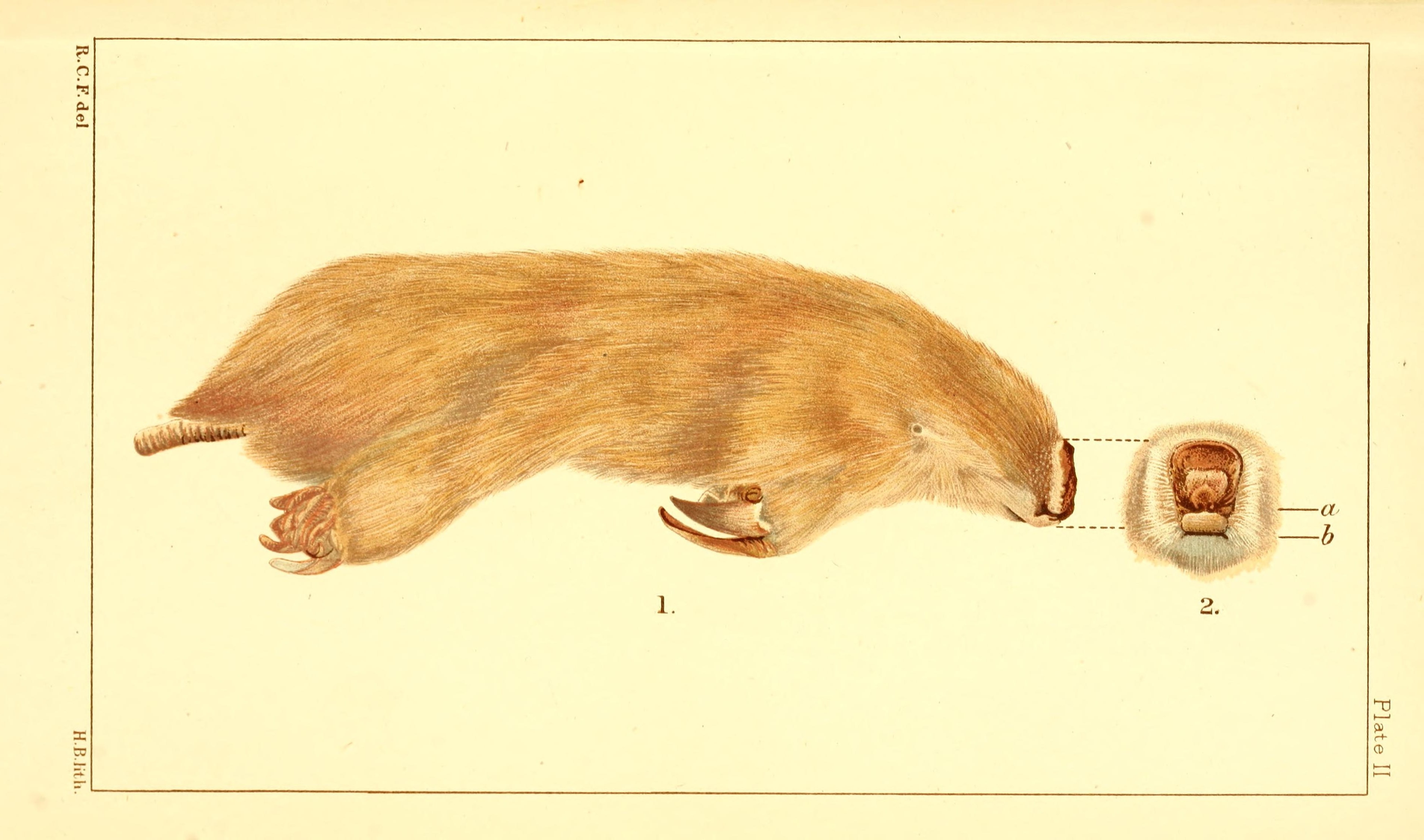
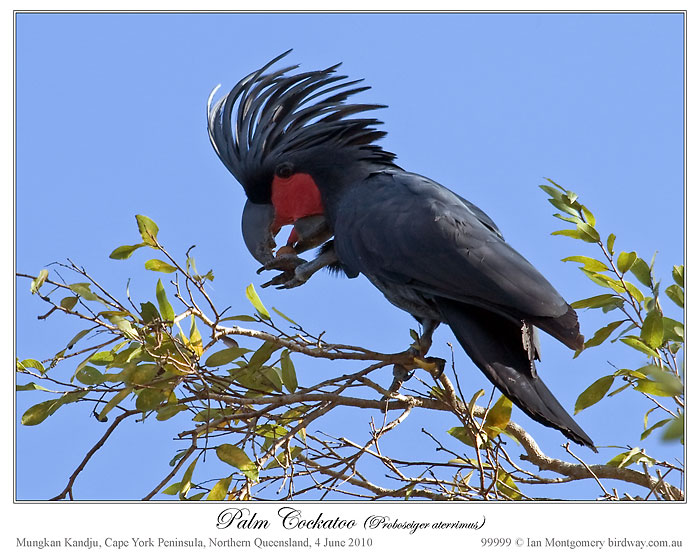
Greetings.
I saved that pic and enlarged it...the leafs have serrated edges.
Eucalypt?
Eucalypt?
W
wilbur
this has just been sent to me. originated with the red cross.
"This is a new known spider, so please take note
Has been found all over Eastern Aust and heading to WA.
Looks similar to a huntsman.
This spider is in all states so watchout.
Not a good look!!
Please take note of this spider - it is very dangerous.
Please warn kids and send to every one you know to alert them as well!
This spider is breeding at a rate of speed and is found in more and more houses!!!!
Please ensure all the family takes a good look at this spider.......... take note of what it looks like. So if it looks like a huntsman and you are not sure..........unfortunately, but for your safety's sake........KILL IT!!!! "

causes necrosis of the flesh where it bites.
cheers!
"This is a new known spider, so please take note
Has been found all over Eastern Aust and heading to WA.
Looks similar to a huntsman.
This spider is in all states so watchout.
Not a good look!!
Please take note of this spider - it is very dangerous.
Please warn kids and send to every one you know to alert them as well!
This spider is breeding at a rate of speed and is found in more and more houses!!!!
Please ensure all the family takes a good look at this spider.......... take note of what it looks like. So if it looks like a huntsman and you are not sure..........unfortunately, but for your safety's sake........KILL IT!!!! "
causes necrosis of the flesh where it bites.
cheers!
G
Guest 26753
^ It seems this is a hoax mate.
Brown Recluse Spider Bite Warning
Summary:
Email forward warns about the danger of Brown Recluse spiders and includes graphic pictures of a wound supposedly caused by a recluse bite (Full commentary below.)
Update:
A new version of the warning message claims that the spider shown in the photograph is a "new known" spider that is spreading throughout eastern Australia and heading for Western Australia. This information is untrue. See commentary for details.
Commentary:
This email forward warns of the dangers of the Brown Recluse spider and includes several photographs depicting the progression of a wound supposedly caused by a bite from one of these spiders. Versions of the warning have been circulating since at least 2002.
Although there is no reason to doubt that the wound depicted in the photographs is real, there is also no way of determining if it was actually caused by a Brown Recluse spider bite. This message does not identify the victim shown in the pictures nor does it provide any way of confirming that the wound was a result of a Brown Recluse. Different versions have claimed that the bite occurred in several different areas of the United States and Canada.
Brown Recluse venom can cause necrosis (tissue death) in the area of the bite and can result in a deep and painful wound that takes a long time to heal. However, a number of other causes can result in similar wounds. An Ohio State University Fact Sheet about Brown Recluse Spiders notes that:
Necrotic wounds can result from a variety of agents such as bacteria (Staphylococcus, "flesh-eating" Streptococcus, etc.), viruses, fungi, and arthropods (non-recluse spiders, centipedes, mites, ticks, wasps, bedbugs, kissing bugs, biting flies, etc.). Necrotic conditions also can be caused by vascular and lymphatic disorders, drug reactions, underlying diseases states, and a variety of other agents.
That said, it is possible that the wound is indeed the result of a Brown Recluse spider bite. However, true or not, the message that accompanies the photograph tends to exaggerate risks associated with the bite of the Brown Recluse. Many Brown Recluse bites only cause a small red mark and heal without long-term effects. Also, deaths from Brown Recluse bites are extremely rare. In an article discussing this email warning, entomologist Rick Vetter from the University of California, notes that:
Despite the fact that lots of people believe that brown recluses are deadly, there are only about 8 reported deaths from possible brown recluse bites in the medical literature, Philip Anderson states that there is still not one VERIFIED death from a brown recluse bite and none of the alleged fatal cases are convincing.
Vetter also explains that, if the images do really depict a Brown recluse bite, the case would be "truly one of the rare, horrific ones" and certainly not the normal outcome of such a bite.
Also, Brown Recluse bites are very commonly misdiagnosed and this adds to the myths and hysteria surrounding the creatures. According to a University of California article,
One reason for the great "awareness" of the recluse spiders throughout the United States is that necrotic wounds are misdiagnosed as "brown recluse bites." Although recluses can cause these wounds, the biological data involving the distribution of the spider indicate that most of these diagnoses are incorrect.
Furthermore, the Ohio State University Fact Sheet notes that the "brown recluse spider is not aggressive, and it normally bites only when crushed, handled or disturbed."
Thus, think twice before forwarding this message. The wound depicted may not even be from a Brown Recluse and, in any case, the message overstates the risk of these spiders. Certainly, Brown Recluse spiders can be dangerous and people should be aware of what they look like and where they live. However, I would suggest reviewing Rick Vetter's in-depth analysis of this message and other information about recluse spiders before you hit the forward button.
Brown Recluse Spider Bite Warning
Summary:
Email forward warns about the danger of Brown Recluse spiders and includes graphic pictures of a wound supposedly caused by a recluse bite (Full commentary below.)
Update:
A new version of the warning message claims that the spider shown in the photograph is a "new known" spider that is spreading throughout eastern Australia and heading for Western Australia. This information is untrue. See commentary for details.
Commentary:
This email forward warns of the dangers of the Brown Recluse spider and includes several photographs depicting the progression of a wound supposedly caused by a bite from one of these spiders. Versions of the warning have been circulating since at least 2002.
Although there is no reason to doubt that the wound depicted in the photographs is real, there is also no way of determining if it was actually caused by a Brown Recluse spider bite. This message does not identify the victim shown in the pictures nor does it provide any way of confirming that the wound was a result of a Brown Recluse. Different versions have claimed that the bite occurred in several different areas of the United States and Canada.
Brown Recluse venom can cause necrosis (tissue death) in the area of the bite and can result in a deep and painful wound that takes a long time to heal. However, a number of other causes can result in similar wounds. An Ohio State University Fact Sheet about Brown Recluse Spiders notes that:
Necrotic wounds can result from a variety of agents such as bacteria (Staphylococcus, "flesh-eating" Streptococcus, etc.), viruses, fungi, and arthropods (non-recluse spiders, centipedes, mites, ticks, wasps, bedbugs, kissing bugs, biting flies, etc.). Necrotic conditions also can be caused by vascular and lymphatic disorders, drug reactions, underlying diseases states, and a variety of other agents.
That said, it is possible that the wound is indeed the result of a Brown Recluse spider bite. However, true or not, the message that accompanies the photograph tends to exaggerate risks associated with the bite of the Brown Recluse. Many Brown Recluse bites only cause a small red mark and heal without long-term effects. Also, deaths from Brown Recluse bites are extremely rare. In an article discussing this email warning, entomologist Rick Vetter from the University of California, notes that:
Despite the fact that lots of people believe that brown recluses are deadly, there are only about 8 reported deaths from possible brown recluse bites in the medical literature, Philip Anderson states that there is still not one VERIFIED death from a brown recluse bite and none of the alleged fatal cases are convincing.
Vetter also explains that, if the images do really depict a Brown recluse bite, the case would be "truly one of the rare, horrific ones" and certainly not the normal outcome of such a bite.
Also, Brown Recluse bites are very commonly misdiagnosed and this adds to the myths and hysteria surrounding the creatures. According to a University of California article,
One reason for the great "awareness" of the recluse spiders throughout the United States is that necrotic wounds are misdiagnosed as "brown recluse bites." Although recluses can cause these wounds, the biological data involving the distribution of the spider indicate that most of these diagnoses are incorrect.
Furthermore, the Ohio State University Fact Sheet notes that the "brown recluse spider is not aggressive, and it normally bites only when crushed, handled or disturbed."
Thus, think twice before forwarding this message. The wound depicted may not even be from a Brown Recluse and, in any case, the message overstates the risk of these spiders. Certainly, Brown Recluse spiders can be dangerous and people should be aware of what they look like and where they live. However, I would suggest reviewing Rick Vetter's in-depth analysis of this message and other information about recluse spiders before you hit the forward button.
The bite from a white tailed spider causes necrosis too These spiders are pretty common here especially around homes.
I don't lose any sleep over it though.
I'm more concerned about tiger and king brown snakes.
I don't lose any sleep over it though.
I'm more concerned about tiger and king brown snakes.
Smoking Moose is right on the money....
Spider hoax
July 2010
Spider hoax clogs inboxes Australia-wide
This month the Queensland Museum Inbox has been flooded with inquiries concerning a supposedly very dangerous spider, whose bite is believed to cause severe necrosis of the flesh. The email claims it is a new Huntsman-like spider recently arrived to Eastern Australia, is heading for Western Australia, and is breeding at an alarming rate. So, is this story true?
Answer
No. While the image is of a real spider, the Brown Recluse Spider (Loxosceles reclusa), the story is false. A few points from our Senior Curator of Arachnology:
- this series of photos have been around for years, originating in the US and having nothing to do with Australia
- the spider does not cause the wound
- our native White-tailed Spiders (Lampona spp.) have also been erroneously blamed for the development of a similar lesion
- no Australian spider is know to have necrotic (tissue-destroying) venom
- the causes of these wounds are diverse and not related to spiders
- although the spider does occur in Australia, it only lives in a very restricted suburban area in a southern Australian State, has been here for approximately 20 years, has not extended its range, and no bites have been recorded from it
To access more information about Loxosceles envenomations, see the following freely available journal paper:
Vetter, R.S. (2008). Spiders of the genus Loxosceles (Araneae, Sicariidae): a review of biological, medical and psychological aspects regarding envenomations. The Journal of Arachnology 36:150–163 http://www.americanarachnology.org/JoA_free/JoA_v36_n1/arac-36-1-150.pdf
Some commentators have suggested that the Australian version of the warning may refer to Australia's White-tailed Spider. The White-tailed Spider is a creature that, like the Brown Recluse in the US, has been the subject of many reports regarding the severity of necrotic wounds caused by its bite. However, these reports are largely unsubstantiated. A fact sheet on the Australian Museum website notes:
White-tailed Spider bites can cause initial burning pain followed by swelling and itchiness at the bitten area. Occasionally, weals, blistering or local ulceration have been reported - conditions known medically as necrotising arachnidism. As well as the spider's venom, minor bacterial infection of the wound may be a contributory factor in such cases.
A debate continues about the involvement of White-tailed Spider bite in cases of severe ulcerative skin lesions seen in patients diagnosed as probable spider bite victims. Typically, in such cases no direct evidence of spider bite is available. Sensational media reporting of supposed cases of severe "necrotising arachnidism" has given the White-tailed Spider a bad reputation. However, a recent study has monitored the medical outcomes of over 100 verified White-tailed Spider bites and found not a single case of ulceration (confirming the results of an earlier study). The available evidence suggests that skin ulceration is not a common outcome of White-tailed Spider bite.
W
wilbur
thanks Moose and Smurf!
seems to me while the Internet is exceedingly Democratic ... it is so for fools and liars too!
cheers!
seems to me while the Internet is exceedingly Democratic ... it is so for fools and liars too!
cheers!
a cheeky rainbow lorikeet ..
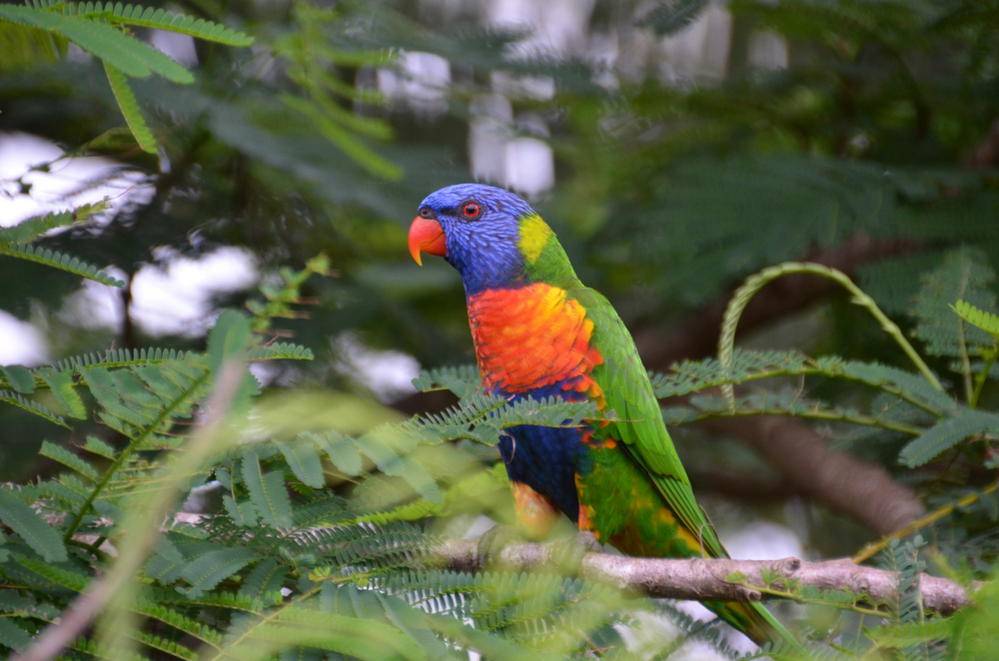
taslicker
Member
our christmas visitor
our christmas visitor
this little guy trotted across the front garden on christmas day.
not a super clear shot but i didnt have a telephoto lens and he was moving. i got as close as i could and just got off as many pics as i could.
he is an Echidna (aussie version of the porcupine or hedgehog)


our christmas visitor
this little guy trotted across the front garden on christmas day.
not a super clear shot but i didnt have a telephoto lens and he was moving. i got as close as i could and just got off as many pics as i could.
he is an Echidna (aussie version of the porcupine or hedgehog)

Hey taslicker ,
well your the only one of us thats managed to capture one on the camera so far,
well done ...
I ve been out and about quite a bit since last posting in this thread,
and ive carried the camera to try and get some "aussie" scenery and animals ...
first up , the tropical north,
the Daintree , and Cape Tribulation ..
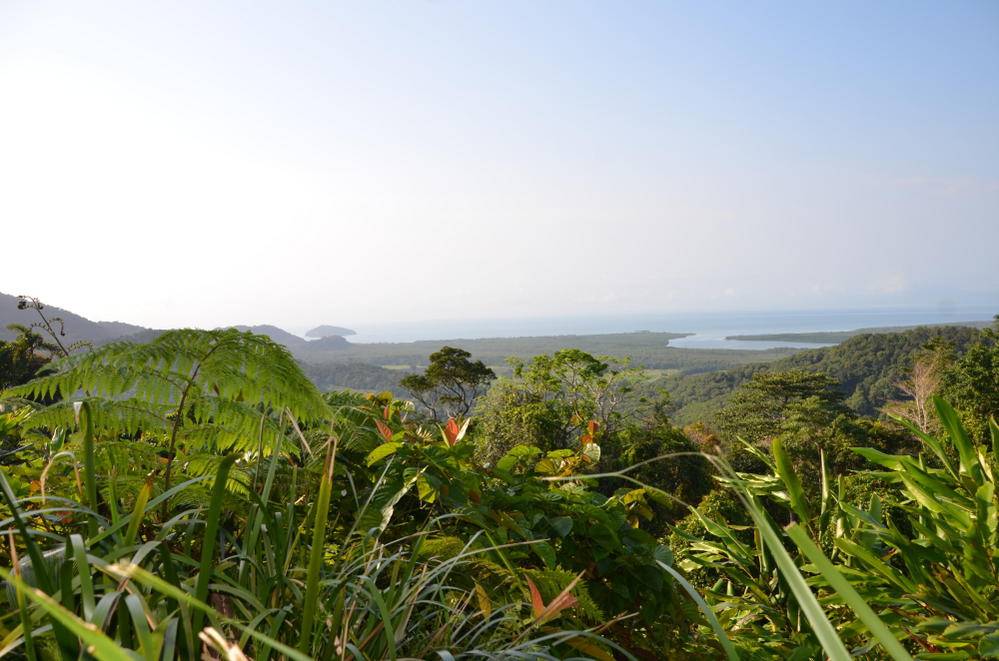


well your the only one of us thats managed to capture one on the camera so far,
well done ...
I ve been out and about quite a bit since last posting in this thread,
and ive carried the camera to try and get some "aussie" scenery and animals ...
first up , the tropical north,
the Daintree , and Cape Tribulation ..
some mangroves and its inhabitants ...
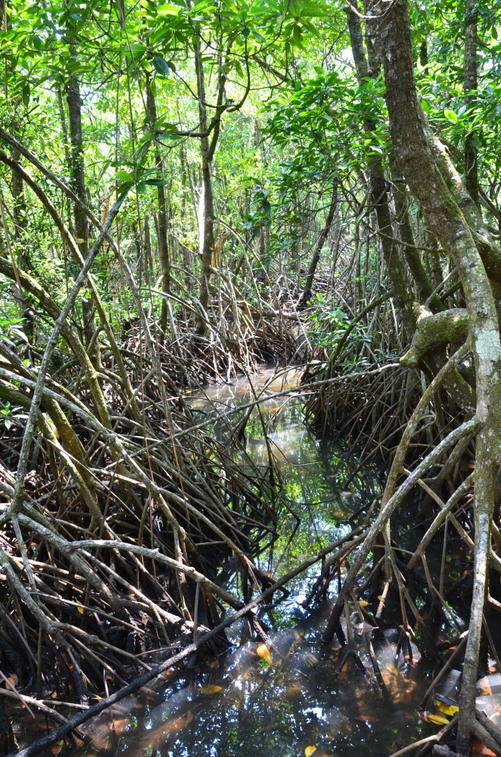
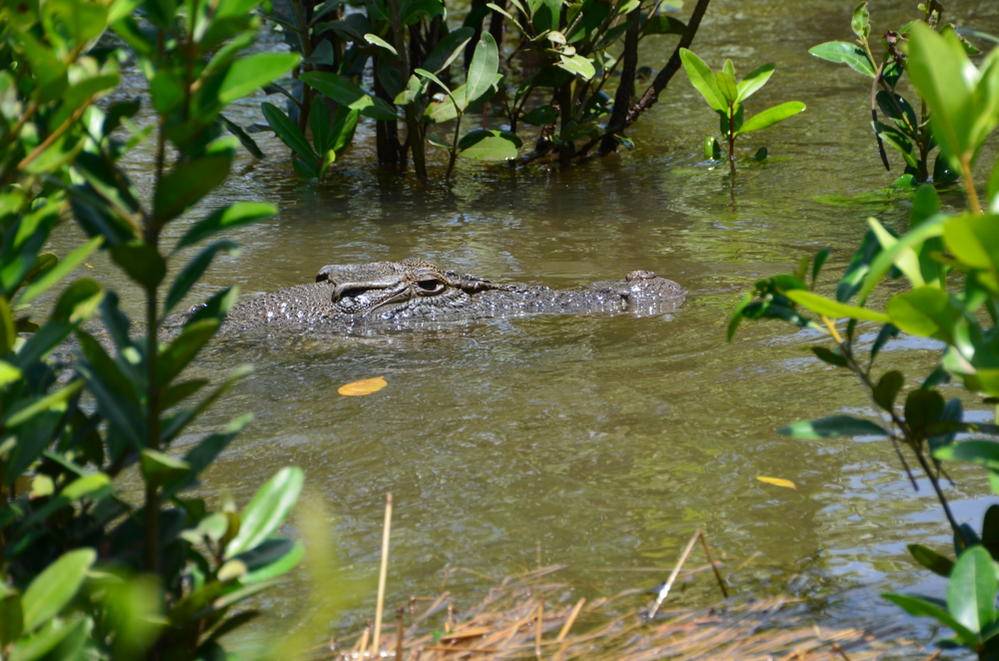
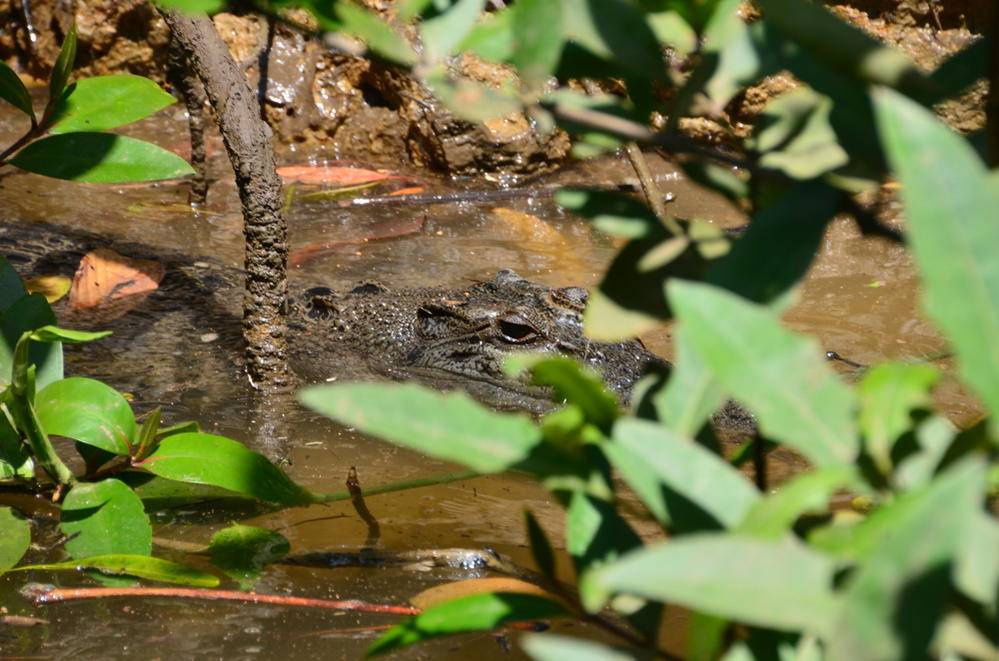
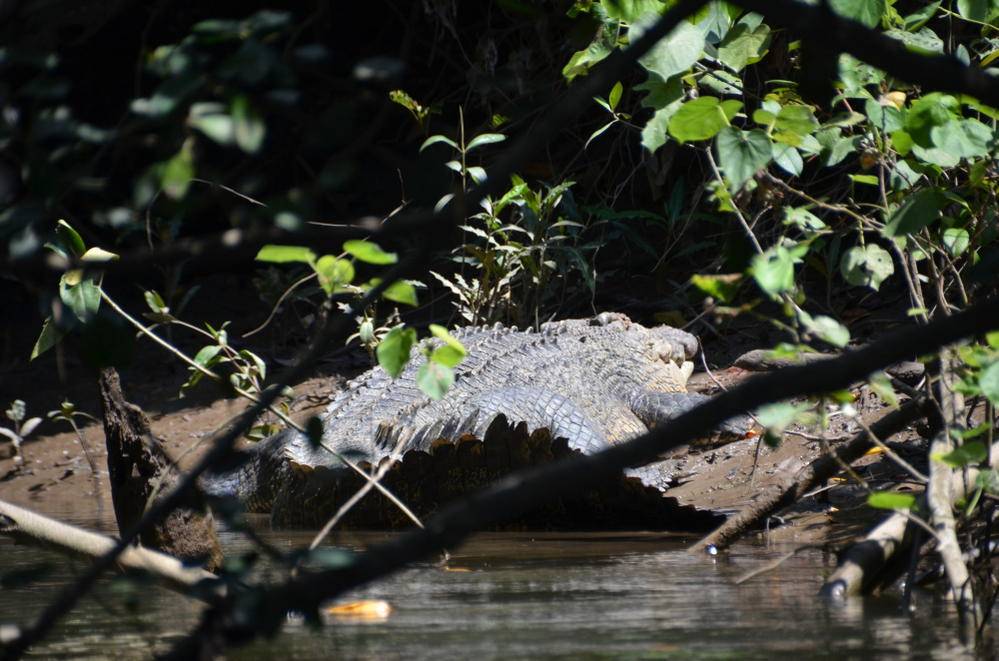
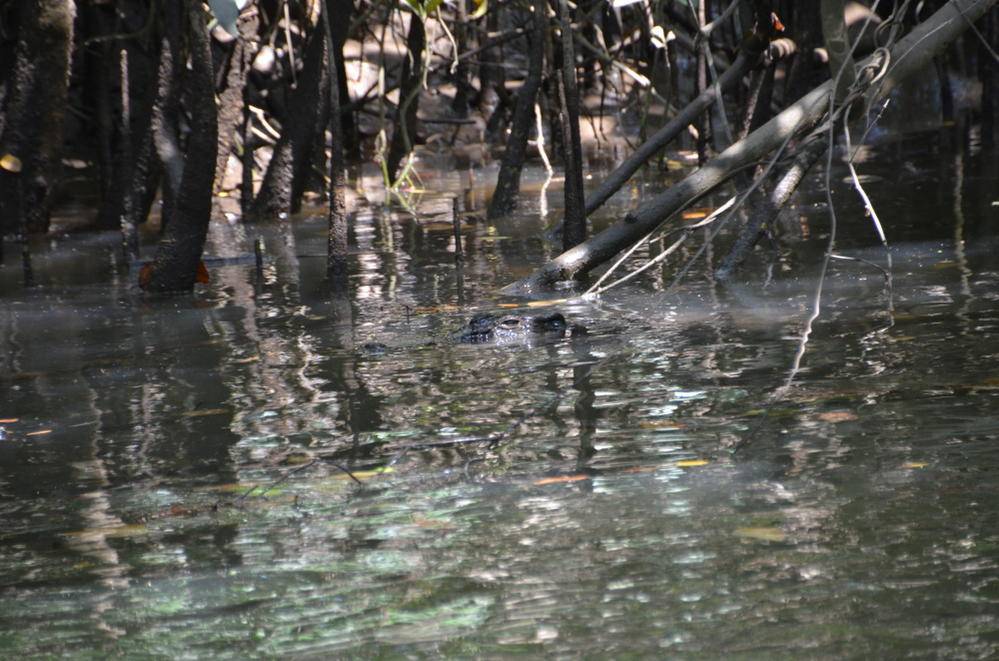
some rainforest trees ,
and some bordering a fresh water lake,
a few critters along the way ...
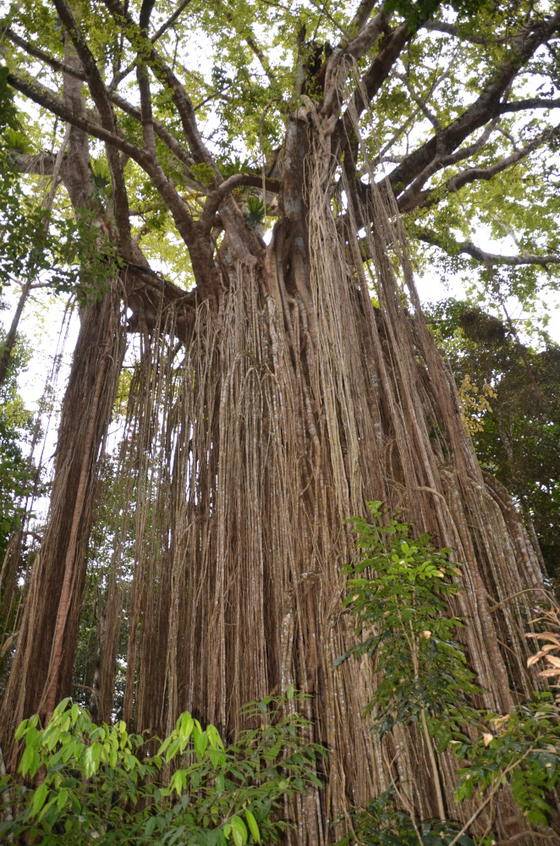
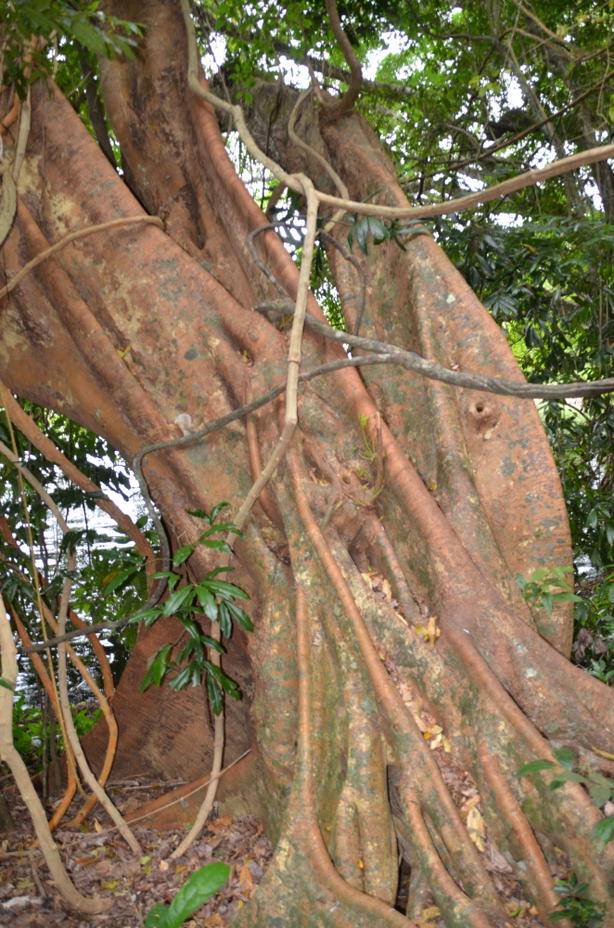
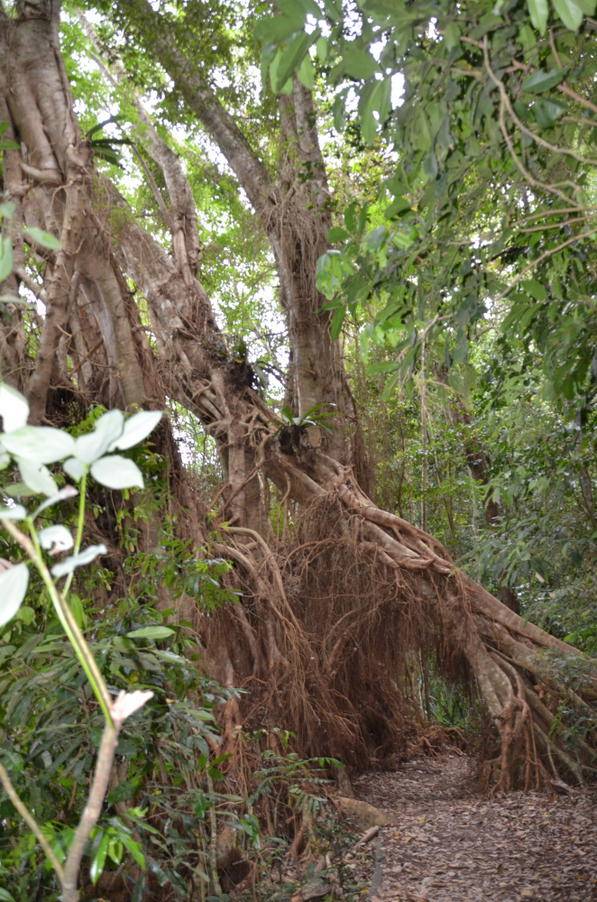
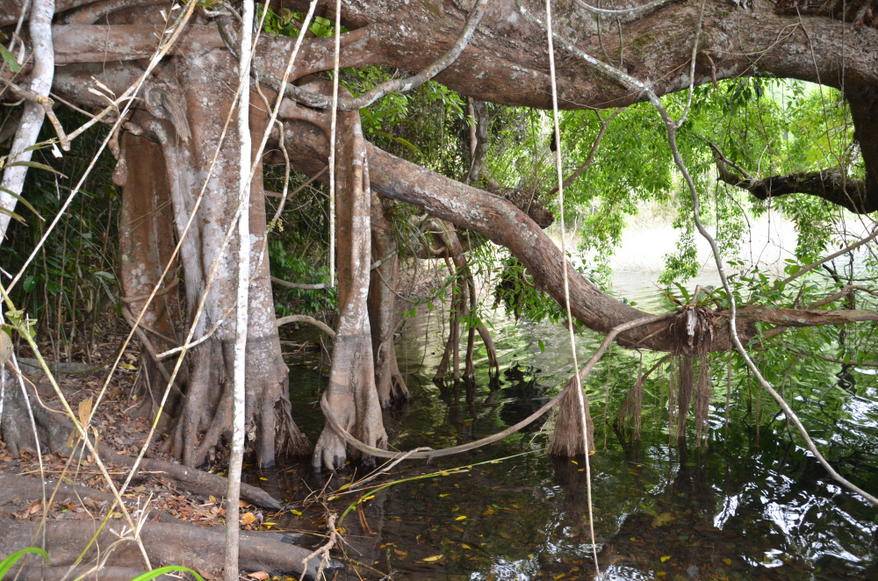
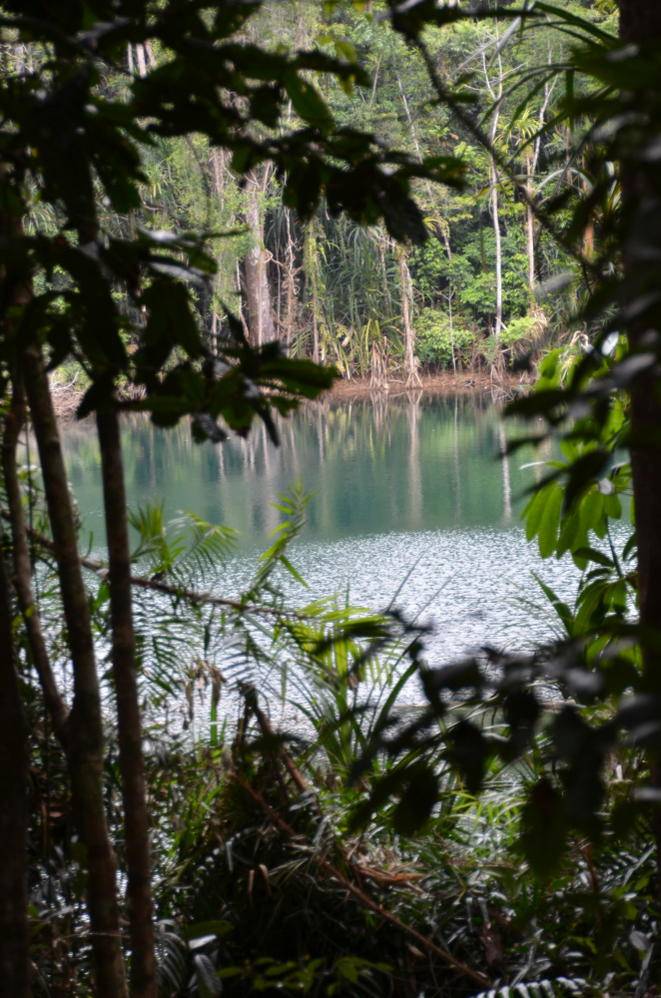
and some bordering a fresh water lake,
a few critters along the way ...
last one is just a shot from home of some peach blossom and the bees it was attracting ..
Love the daintree. Went there for the first time as a 6 year old. So many crocodiles, and its when i first got addicted to mud crabs.
You prob wont believe this but. I know a guy who swam across the mouth of the Daintree river. After making it to the other side the idiot realised he had to swim back. He survived (how i dont know) maybe the crocs were not hungry that day.
You prob wont believe this but. I know a guy who swam across the mouth of the Daintree river. After making it to the other side the idiot realised he had to swim back. He survived (how i dont know) maybe the crocs were not hungry that day.
Love the daintree. Went there for the first time as a 6 year old. So many crocodiles, and its when i first got addicted to mud crabs.
You prob wont believe this but. I know a guy who swam across the mouth of the Daintree river. After making it to the other side the idiot realised he had to swim back. He survived (how i dont know) maybe the crocs were not hungry that day.
they would have probably gotten him if he was silly enough to try it more than once ,
those old crocs know how to bide there time ...
im going to have to get a decent mud crab dish made ,
i havent taken to it really,
thank goodness i guess given the price of them nowdays ,, geeeepers ...
thats going to be an expensive addiction these days terrior...
used to be easy to catch in the tidal creeks along the coast,
ill have to swing by and throw a line in and see what comes up..
- Status
- Not open for further replies.



